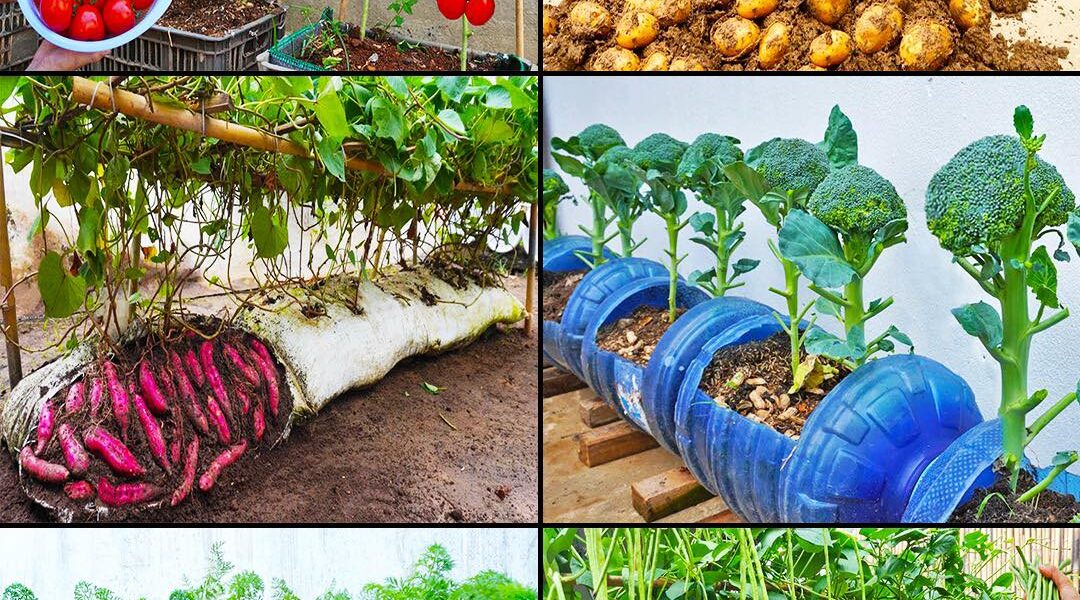Unlock the Bounty of Spring: A Guide to Cultivating Your Garden’s Full Potential
As winter fades away and spring approaches, it’s time to prepare for a new gardening season. Whether you’re a gardening veteran or an enthusiastic novice, it’s time to think about your garden. This detailed guide will help you choose from a variety of vegetables to grow, ensuring an explosion of color, flavor and life in your garden. From root vegetables hidden underground to the splendor of sunflowers, it’s time to sow the seeds of your most successful garden yet.
- In the tradition of basic vegetables:
Potatoes and sweet potatoes: these tubers, each with their own characteristics, are essential in every garden. Versatile and hardy, potatoes can thrive in different environments, from flower beds to containers. As for sweet potatoes, with their lush vines, they prefer large spaces or large containers to flourish.
Carrots, beets, parsnips and radishes: these root vegetables, hidden underground, are not only cold-resistant but can also be grown on hot summer days. Early spring is the perfect time to plant them, providing an abundance of crisp, colorful vegetables. From the earthy sweetness of beets to the liveliness of radishes, your garden will be a treasure trove of underground delights.
- Green leaves and brassicas: lettuce, chard and cabbage family
Lettuce: With a range of varieties, from leaf to head, lettuce grows quickly and can be harvested in less than a month. Its versatility makes it an excellent choice for interplanting among slower growing crops, maximizing your garden’s yield.
Chard: both visually magnificent and delicious in the kitchen, chard offers edible leaves and stems resistant to cold and summer heat. A few plants may be enough due to their generous size.
Brassicas: This hardy family, including broccoli, cauliflower, kale and cabbage, is known for its ability to withstand cold. These long-growing plants are ideal for intercropping, making efficient use of space by surrounding them with faster-harvesting crops.
- Climbers and creepers: beans, squash and tomatoes
Beans: Whether dwarf or climbing, beans are prolific producers. They adapt to different spaces, with climbing varieties requiring a trellis and dwarf varieties suitable for containers.
Summer Squash and Zucchini: Among the easiest and most rewarding vegetables to grow, they provide a bountiful harvest. Growing varieties like blue Hubbard squash can protect them from pests, ensuring a healthy harvest.
Tomatoes: jewels of the garden, tomatoes offer incomparable flavor. With a multitude of varieties available, they will satisfy every gardener’s preferences and are a must-have in any garden.
- Flourishing flora: sunflowers and companion plants
Sunflowers: Elevate your garden with the splendor of sunflowers. From towering varieties like the “Mongol Giant” to branching varieties of the “Lemon Queen,” sunflowers not only captivate with their beauty but also attract pollinators and beneficial insects.
Marigolds and nasturtiums: beyond their aesthetic appeal, these flowers are assets in the garden. Marigolds repel pests with their scent and protect against nematodes, while nasturtiums act as pest traps, keeping pests away from your edible crops.
- Culinary herbs: basil and dill
No garden would be complete without herbs. Basil, especially late-blooming varieties like ‘Everleaf Emerald Towers,’ is essential for its versatility in cooking. Dill, in addition to its culinary uses, attracts beneficial insects and serves as a host plant for butterfly larvae. - Exotic additions: turmeric and ginger
For those looking for a touch of the exotic, turmeric and ginger are fascinating choices. Although they require a long, warm growing season, these tropical plants can be grown indoors in cooler climates and then transplanted into containers or beds once the weather warms. - Celebrate spring
As you set out on your garden this spring, armed with seeds, soil, and a healthy dose of optimism, remember that every plant you grow is a step toward a greener, more sustainable world. That this
